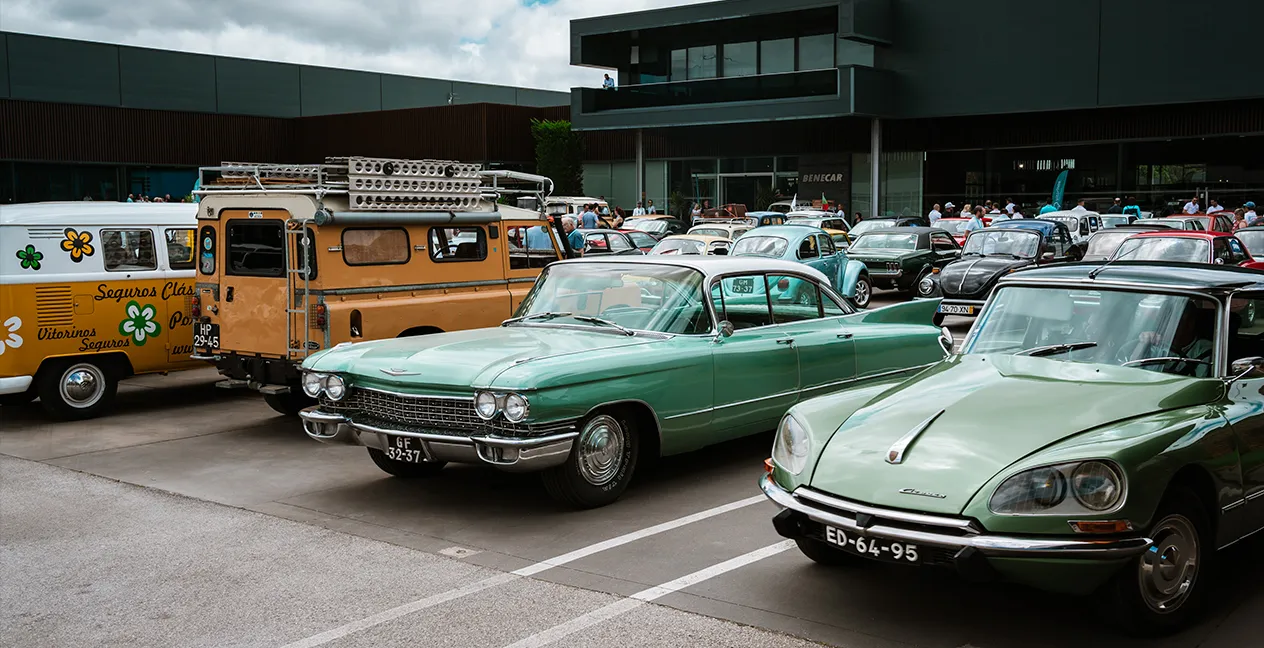
Created by Ana Faustino at Tuesday, 31 May 2022
What are classic, antique and historic cars
There are three important names when it comes to classic cars: classic vehicles, vintage vehicles and historic vehicles.
.
The definition of classic vehicles is the broadest, not depending on the age of the car, but on other characteristics. Here, intrinsic quality characteristics count, such as craftsmanship and statics, historical importance, rarity or exclusivity, charisma, i.e. something that doesn't go out of fashion. There are some examples of cars and motorcycles in production that could fall into this category.
Some of the classic vehicles may be antique or even historic, but they all stand out from current motor vehicle production.
Vintage vehicles are so called because of their age. Increasingly, this criterion covers more vehicles and its purely objective classification has proved insufficient. Generally, these vehicles are outdated in technological terms, but they are still an asset in terms of historical or emotional milestones.
The FIA/FIVA has defined the concept of historic cars and it has been accepted by the European Commission. According to these entities, they are vehicles that are part of the technical and cultural heritage due to their age of more than 30 years, conservation in correct conditions from a historical point of view and not being used as a means of transportation in everyday life.
.
See below how to classify your car according to different criteria.
.
FIVA Categories of Historic Vehicles
CATEGORY A - PIONEERS: Vehicles built before December 31, 1904;
CATEGORY B - VETERANS: Vehicles built between January 1, 1905 and December 31, 1918;
CATEGORY C - VINTAGE: Vehicles built between January 1, 1919 and December 31, 1930;
CATEGORY D - POST-VINTAGE: Vehicles built between January 1, 1931 and December 31, 1945;
CATEGORY E - POST-WAR: Vehicles built between January 1, 1946 and December 31, 1960;
CATEGORY F: Vehicles built between January 1, 1961 and December 31, 1970;
CATEGORY G: Vehicles built between January 1, 1971 and December 31, 1980;
CATEGORY H: Vehicles built between January 1, 1981 and December 31, 1990;
.
State or condition of vehicles according to FIVA
CLASS 1 - AUTHENTIC
Vehicle as it was originally produced, little deteriorated, in original condition, including interior and exterior finishes, with the exception of tires, spark plugs, battery and other perishable items.
CLASS 2 - ORIGINAL
Vehicle used without ever having been restored, with a continuous history, in original condition, although possibly deteriorated. Parts that normally deteriorate through use can be replaced with period specification parts. The paintwork, exterior details and upholstery may have been redone in due course.
CLASS 3 - RESTORED
A vehicle, totally or partially dismantled, repaired and reassembled, with minor changes to the manufacturer's original specifications in the event of unavailability of parts or materials. The manufacturer's original parts must be used, where available, but may be replaced by others of the same specification. Interior and exterior finishes may be recent, but as far as possible in accordance with the specifications of the time.
CLASS 4 - REBUILT
Parts from one or more vehicles of the same type or model, assembled into a single vehicle as far as possible in accordance with the manufacturer's specifications. Parts can be manufactured during the rebuild or made outside the period (such as bodywork, engine block or any other part that does not bear identification). Interior and exterior finishes must be in accordance with period specifications.
.
.
.
Source: acp.pt
Translated with DeepL.com






